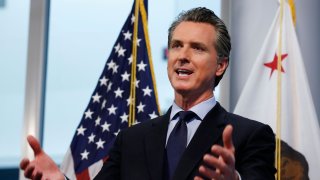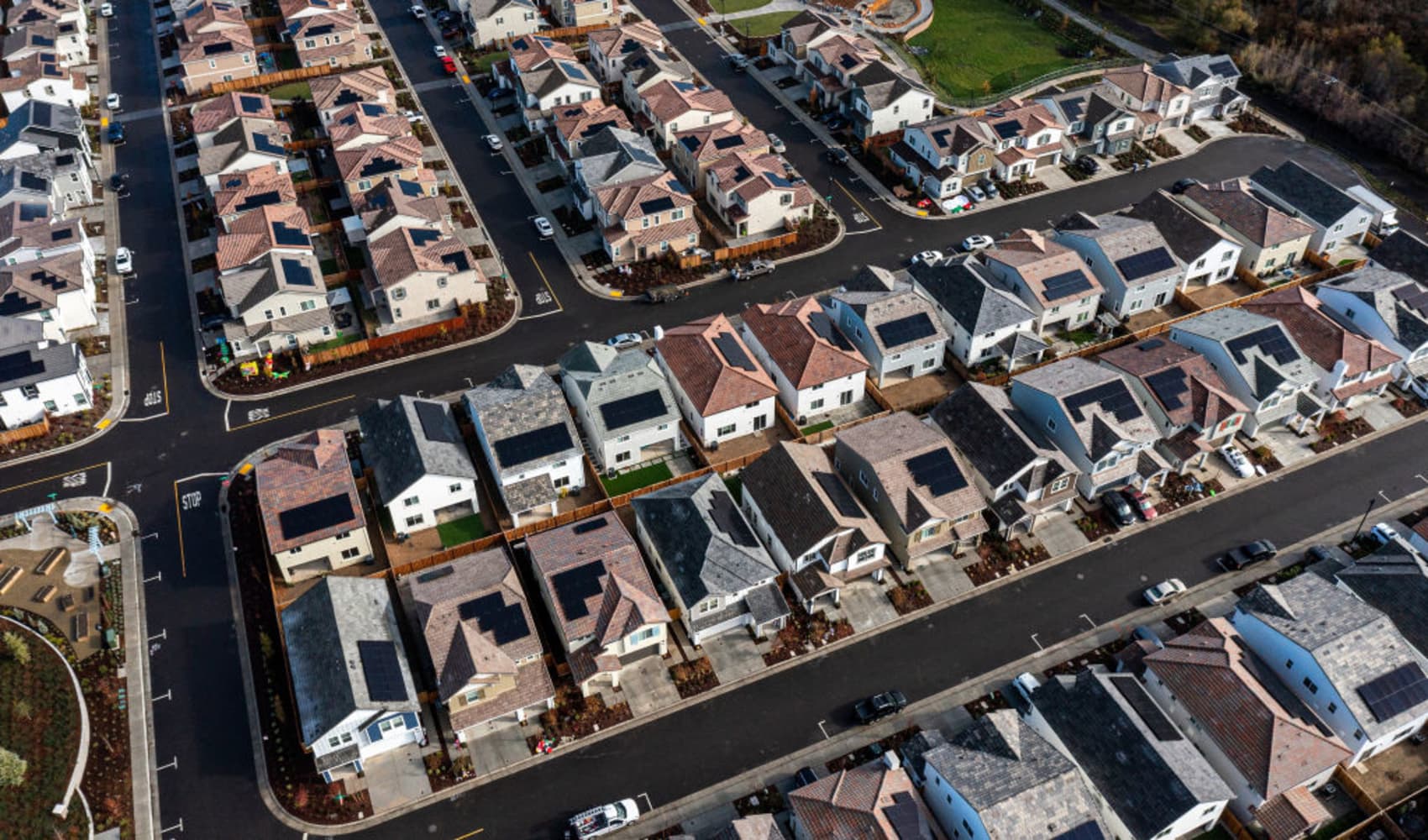
- California will impose a limited stay-at-home order on certain regions of the state if capacity in their ICU units falls below 15%, Gov. Gavin Newsom said.
- The three-week order would require bars, wineries, personal services, hair salons and barbershops to temporarily close, he said, while some schools and critical infrastructure would remain open.
- Retail stores could operate at 20% capacity and restaurants would be allowed to offer take-out and delivery, he said.
California will impose a limited stay-at-home order on certain regions of the state where Covid-19 cases are placing a strain on intensive care units, Gov. Gavin Newsom announced Thursday.
The state will be split into five regions — the Bay Area, Greater Sacramento, Northern California, San Joaquin Valley and Southern California. If the remaining ICU capacity in a region falls below 15%, it will trigger a three-week stay-at-home order, Newsom said.
The order would require bars, wineries, personal services, hair salons and barbershops to temporarily close. Personal services are businesses like nail salons, tattoo parlors and body waxing, according to the state's website. Schools that meet the state's health requirements and critical infrastructure would be allowed to remain open, and retail stores could operate at 20% capacity and restaurants would be allowed to offer take-out and delivery, the Democratic governor said.
So far, none of the regions have triggered the stay-at-home order, though every part of the state is expected to at some point in December. Newsom said he anticipates four of the five regions to have less than 15% ICU capacity "as early as the next day or two." The Bay Area is projected to reach that milestone by mid-to-late December, he said.
"The bottom line is if we don't act now, our hospital system will be overwhelmed. If we don't act now, we'll continue to see a death rate climb, more lives lost," Newsom said during a press briefing.
Roughly 8,208 people were hospitalized with Covid-19 in California as of Wednesday, based on a weekly average, according to a CNBC analysis of data compiled by the COVID Tracking Project, which is run by journalists at The Atlantic. That figure marks a more than 35% increase compared with a week ago.
"We are right now in the most dangerous time of this pandemic for our state and our region," San Francisco Mayor London Breed said in a tweet after the governor's announcement.
"Cases and hospitalizations are surging. Unless we get things under control immediately, we could quickly run out of hospital beds in the Bay Area," Breed said.
Under the state's four-tiered reopening plan, most of the state's population remains under the most restrictive "widespread" tier. Thursday's announcement would impose the restrictions in "a much more broad, much more comprehensive way," Newsom said.
The new measures are intended to prevent Californians from mixing with people who don't live in their household and to keep gatherings outside rather than inside. However, people are still encouraged to walk their dog, exercise, go sledding or walk on the beach, Newsom said.
Money Report
"This is not a permanent state. This is what many had projected," Newsom said, adding that this will be the pandemics "final surge" as vaccines move closer to authorization.
"There's light at the end of the tunnel," he said.
— CNBC's Riya Bhattacharjee contributed to this report.






